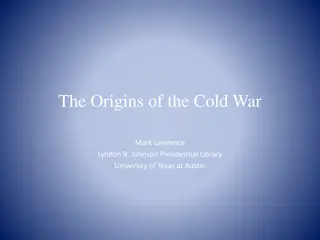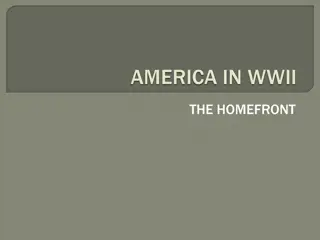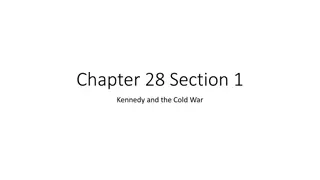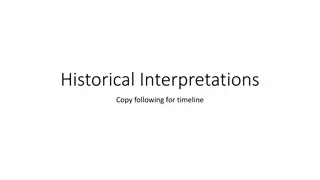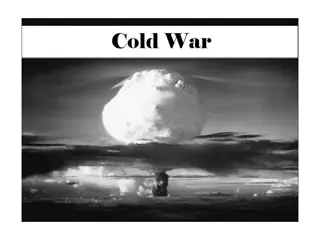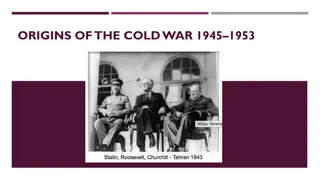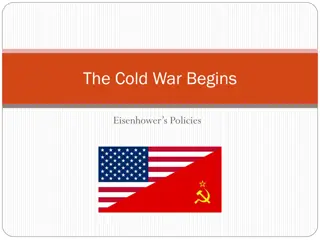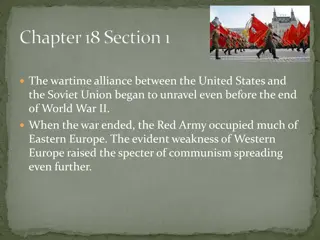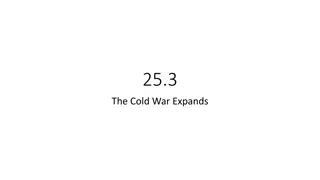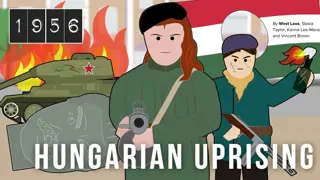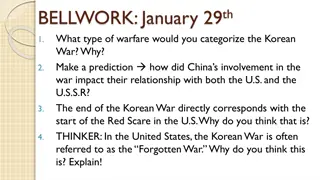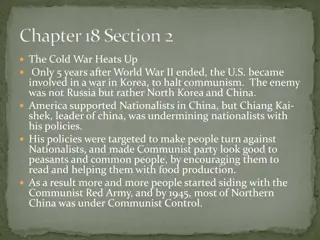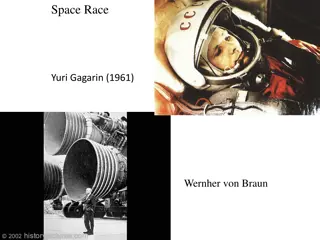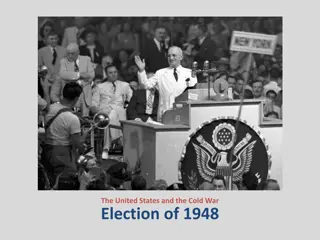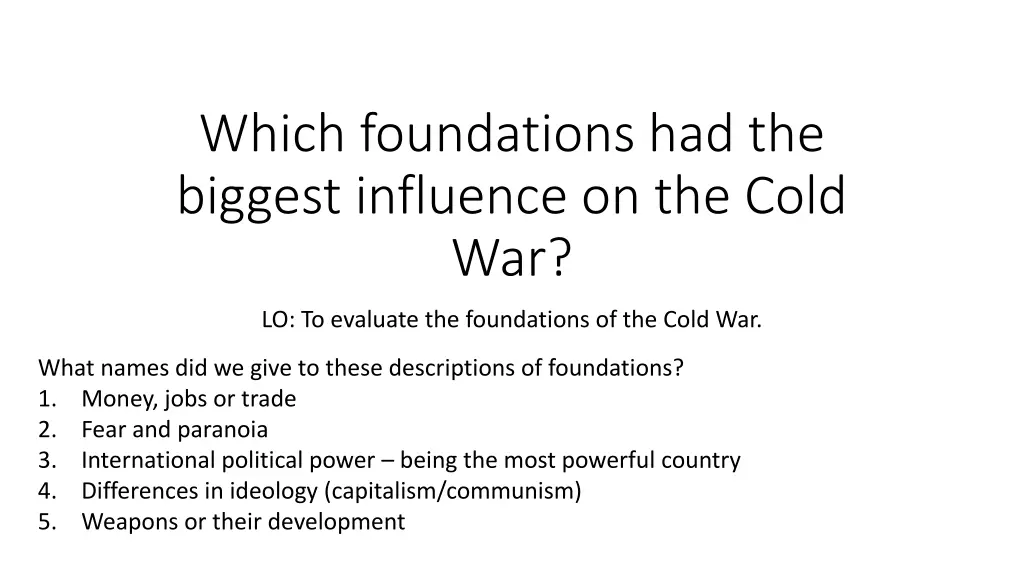
Influential Foundations of the Cold War: An Analysis
Explore the significant factors influencing the Cold War like economic factors, mutual fear, desire for supremacy, ideology, and the arms race. Group discussions and historical examples highlight their roles in causing tensions between the USA and USSR.
Download Presentation

Please find below an Image/Link to download the presentation.
The content on the website is provided AS IS for your information and personal use only. It may not be sold, licensed, or shared on other websites without obtaining consent from the author. If you encounter any issues during the download, it is possible that the publisher has removed the file from their server.
You are allowed to download the files provided on this website for personal or commercial use, subject to the condition that they are used lawfully. All files are the property of their respective owners.
The content on the website is provided AS IS for your information and personal use only. It may not be sold, licensed, or shared on other websites without obtaining consent from the author.
E N D
Presentation Transcript
Which foundations had the biggest influence on the Cold War? LO: To evaluate the foundations of the Cold War. What names did we give to these descriptions of foundations? 1. Money, jobs or trade 2. Fear and paranoia 3. International political power being the most powerful country 4. Differences in ideology (capitalism/communism) 5. Weapons or their development
Some foundations of the Cold War 1. Money, jobs or trade 2. Fear and paranoia 3. International political power being the most powerful country 4. Differences in ideology (capitalism/communism) 5. Weapons or their development 1. Economic factors 2. Mutual fear 3. Desire for supremacy 4. Ideology 5. The arms race
Todays purpose We are going to compare what you learned from the stories of your figures from the Cold War. This will give you more evidence about each foundation and enable you to judge which you think may have been the most important. Read back through your story and ranking from last lesson to remind you of your thinking.
Comparing answers In your mixed groups: Take each foundation in turn, starting with the first: oThe arms race oEconomic factors oDesire for supremacy oMutual fear oIdeology How did it help to cause the Cold War? Do you all agree? Write a shared summary sentence.
Model example: arms race The arms race was quite important in the Cold War because it increased tension. The Soviet development of the atom bomb in 1949 convinced many in America that the USSR wanted to achieve world domination. This helped to cause McCarthyism and the Americans to become more extreme and less likely to negotiate. The arms race helped to increase tensions in the Cold War, but wasn t as important as the desire for supremacy and ideology, which were the reasons why tension developed between the USSR and USA in the first place.
Class example: economic factors Importance and role Specific evidence (names/dates) Explanation of relative importance compared with other foundations
Independent work Work through the final three in your group. When you have finished, decide on your new ranking. Creating? Sustaining?
Plenary Our last few lessons have been about setting the scene for the Cold War. You will re-visit the foundations each time you consider a new crisis in the Cold War to see which were most important in causing the crisis and which may have been affected by it. Write five bullet points to try to summarise your understanding of the Cold War: oWho? oWhen? oWhy? oWhat? oWhere?

